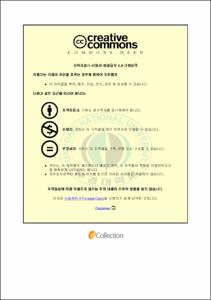담화표지 '이제'의 운율적 특징과 화용적 기능
- Abstract
- This research examined the pragmatic function of 'Ice' which appears frequently on the beginning of speaking by measuring its rhythmical characteristics such as pitch, length, intensity and pause. Based on a premise that the meaning of 'Ice' is in transition to the discourse marker from the lexical meaning of time-adverb, it was identified that there exist two 'Ice' which express the current speaking time or normal time and also express the conversion of any situation or narrator's emotion.
This research has following limitations. First, it shall be difficult to make the pramatic marker, which could be a personal character generalized because interviews of only three candidates were analyzed. Second, there shall be some limitations because this study examined data obtained from TV interviews which cannot be considered as perfect colloquial language data. However, the character of the narrator shall be disclosed despite of a limitation of TV broadcast, and estimated that the analysis of the interviews shall be sufficient to understand rhythmical features of the discourse and study its pragmatic function.
The findings of the existing researches on the discourse marker 'Ice' present that 'Ice' is likely to be shorter than the time-adverb of 'Ice' in length of utterance, and to be connected to the pause of the preceding utterance or the following utterance. However the results of this research indicate the utterance length of 'Ice' could be shorter than that of the discourse marker depending on mentality of the narrator, or sometimes the pause shall not be appeared.
When examining the pause placed on before or after 'Ice', 'Ice' shall be often spoken out while the pause doesn't appear. The fact that 'Ice' shall be connected to before or after the utterance without the pause illustrates that 'Ice' itself plays a role of the pause. The 'pause' is a unit of the intonation, expresses a joint of thoughts and sometimes plays a role to focus on the following utterance. In addition, it reduces a burden of the listener as well as the narrator who continues speaking. Besides, the discourse marker, 'Ice' was shown to connect the preceding utterance and the following utterance semantically or to delay the utterance while stresses or hesitates the following speaking.
This research also examined that 'Ice' was realized as a ❲Tense Converting Marker❳in the discourse. Events can be described more in vivid through 'Ice' which provisionally converts the tense, and the intimacy bewteen the narrator and listener can be increased by a common sense created by 'Ice'. Such a ❲Tense Converting Marker❳could be available because 'Ice' is derived from the lexical meaning of the time-adverb and has a meaning to implicate a conversion of the situation.
In addition, the frequency of using 'Ice' by the narrators was ranged from one to five times according to their speaking habits. The narrators who mainly use 'Ice' as a time-adverb were seen to substitute the pragmatic function which the discourse maker 'Ice' has, by using another linguistic device instead of 'Ice'.
The language has a property to be governed by a general rule. As a correct sentence is formed by combining several words in accordance with a general rule and principle not by just arranging them in random, a smooth communication shall be available by not only a correct pronunciation but also prosodic features in speaking discourse.
- Issued Date
- 2011
- Awarded Date
- 2011. 2
- Type
- Dissertation
- Publisher
- 부경대학교 대학원
- Affiliation
- 부경대학교 대학원
- Department
- 대학원 국어국문학과
- Advisor
- 김희섭
- Table Of Contents
- Ⅰ. 서론 1
1.1. 연구 목적 2
1.2. 담화표지에 대한 선행 연구 4
1.3. 연구 방법 9
Ⅱ. 이론적 배경 11
2.1. 담화의 개념 및 특성 11
2.2. 담화표지의 개념 및 특성 14
2.3. 담화표지의 유형 16
2.4. 담화표지 이제의 화용적 기능 19
Ⅲ. 담화표지 이제의 운율적 특징과 화용적 기능 26
3.1. 쉼 대용 표지 30
3.2. 시제 전환 표지 36
3.3. 담화 전개 표지 42
3.4. 후행 발화 강조 표지 45
3.5. 망설임 표지 49
Ⅳ. 담화표지 이제 시간부사 이제 55
4.1. 담화표지 이제와 시간부사 이제의 비교 55
4.2. 화자에 따른 이제의 사용 양상 비교 63
Ⅴ. 결론 65
참고 문헌 69
- Degree
- Master
- Files in This Item:
-
-
Download
 담화표지 '이제'의 운율적 특징과 화용적 기능.pdf
기타 데이터 / 1.27 MB / Adobe PDF
담화표지 '이제'의 운율적 특징과 화용적 기능.pdf
기타 데이터 / 1.27 MB / Adobe PDF
-
Items in Repository are protected by copyright, with all rights reserved, unless otherwise indicated.